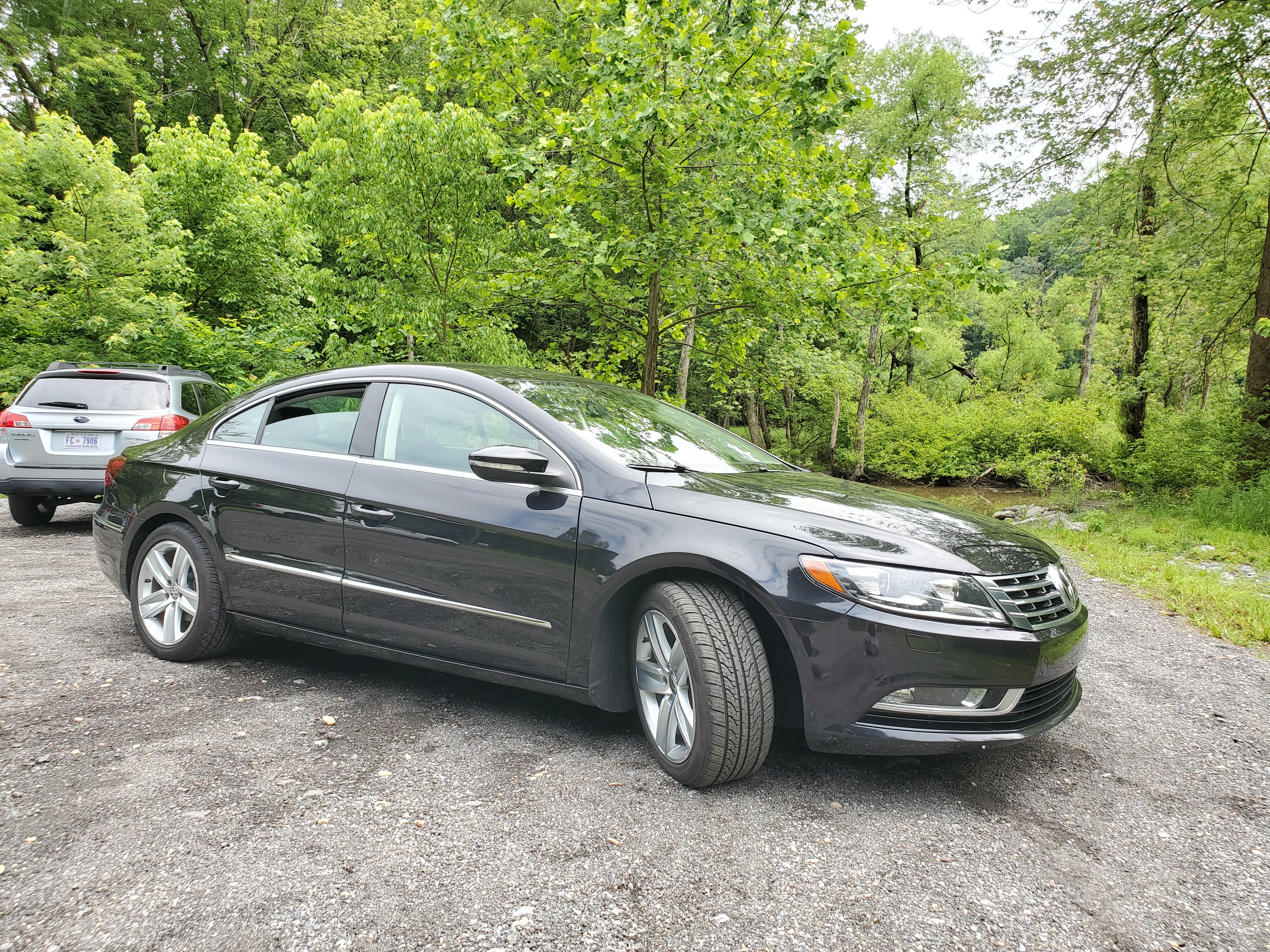
"Coupe"-styled sedans have seemingly become all the rage in the last decade, with many manufacturers developing sedan models with lower, sleeker rooflines, and fastback-like silhouettes. Such models include the Mercedes CLS-class, the BMW 4-series, and Audi A5, as well as more mainstream offerings, like the tenth generation Honda Civic and Hyundai Elantra. By and large, these designs seem to trade interior space for a sleeker, more aggressive style, and perhaps somewhat lower drag. This may well be a product of the trend towards centering crossovers as the "default" commuter and family car, forcing midsize sedans to adopt pretensions of sporting ability, capitalizing on their lower center of gravity and ligher weight compared to crossovers. Having debuted for the 2009 model year, the VW CC, a derivative of the Passat midsize sedan, was relatively early to buy into this new design trend. However, that doesn't mean that the CC really succeeded in capitalizing on that "sporty midsize family car" nature imagined by "coupe" sedans: Only 142808 ever sold in the United States over their nine-year production run, less than the Honda Accord sells in a year. That's not very many cars. Considering that the Dodge Charger, another sporty family sedan, vastly outsold the CC, despite a similar MSRP, this implies that something about the CC just didn't resonate. By exploring this car further, we can begin to guess what.
What is it like?
Considering that the CC shares much of the Passat's engineering with a new body style, let's start with the exterior. Most notable is the extended C pillar and lowered rear roofline, resulting in a shorter rear deck. This of course confers the desired "coupe" or "fastback" silhouette, and combined with a more muscular-looking front end than the standard Passat, the CC looks on the surface like a bigger, meaner Passat. Up front, the CC boasts a larger, deeper grille, as well as larger headlights, that make it almost feel like a low-tier Audi. In the rear, the large lights, narrow trunk opening, and faux diffuser confer a sophisticated, sporty appearance, with chrome body accents all around granting an upscale feel, though it comes across as more "upwardly mobile" than "old money". The sleek exterior looks are augmented by the front wheel drive configuration, which allows the A pillars to be moved forwards relative to the front axle, though the windshield's steepness still appears a little out of place compared to back window's shallow slope. Volkswagen also opted to give the CC frameless door windows, perhaps to produce a more coupe-like appearance. When the doors unlock, the windows retract downwards slightly, which is likely part of a strategy for ensuring better weather and sound sealing despite the frameless design. An early 2000s Impreza with perishing weatherstripping this is not.
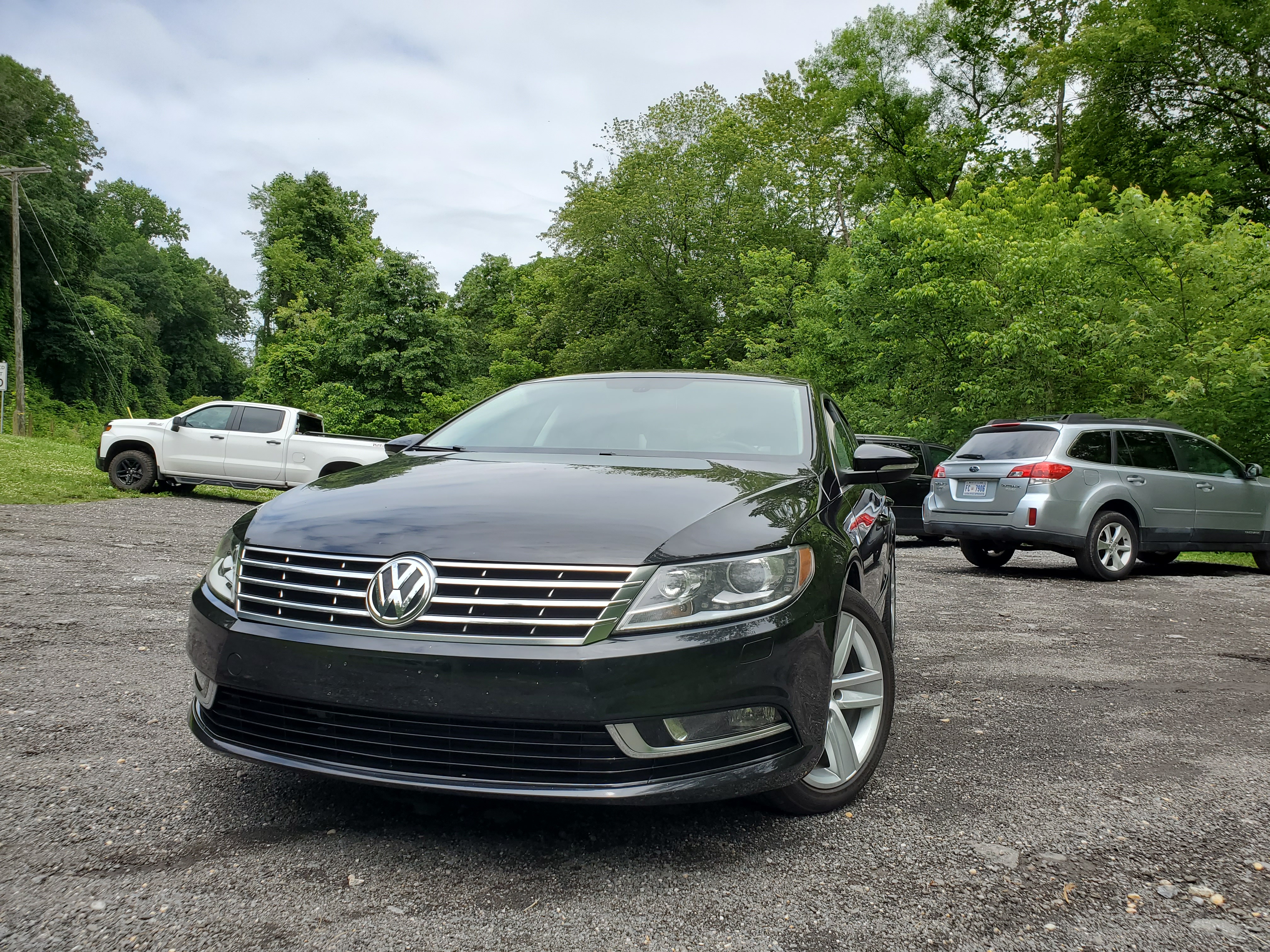

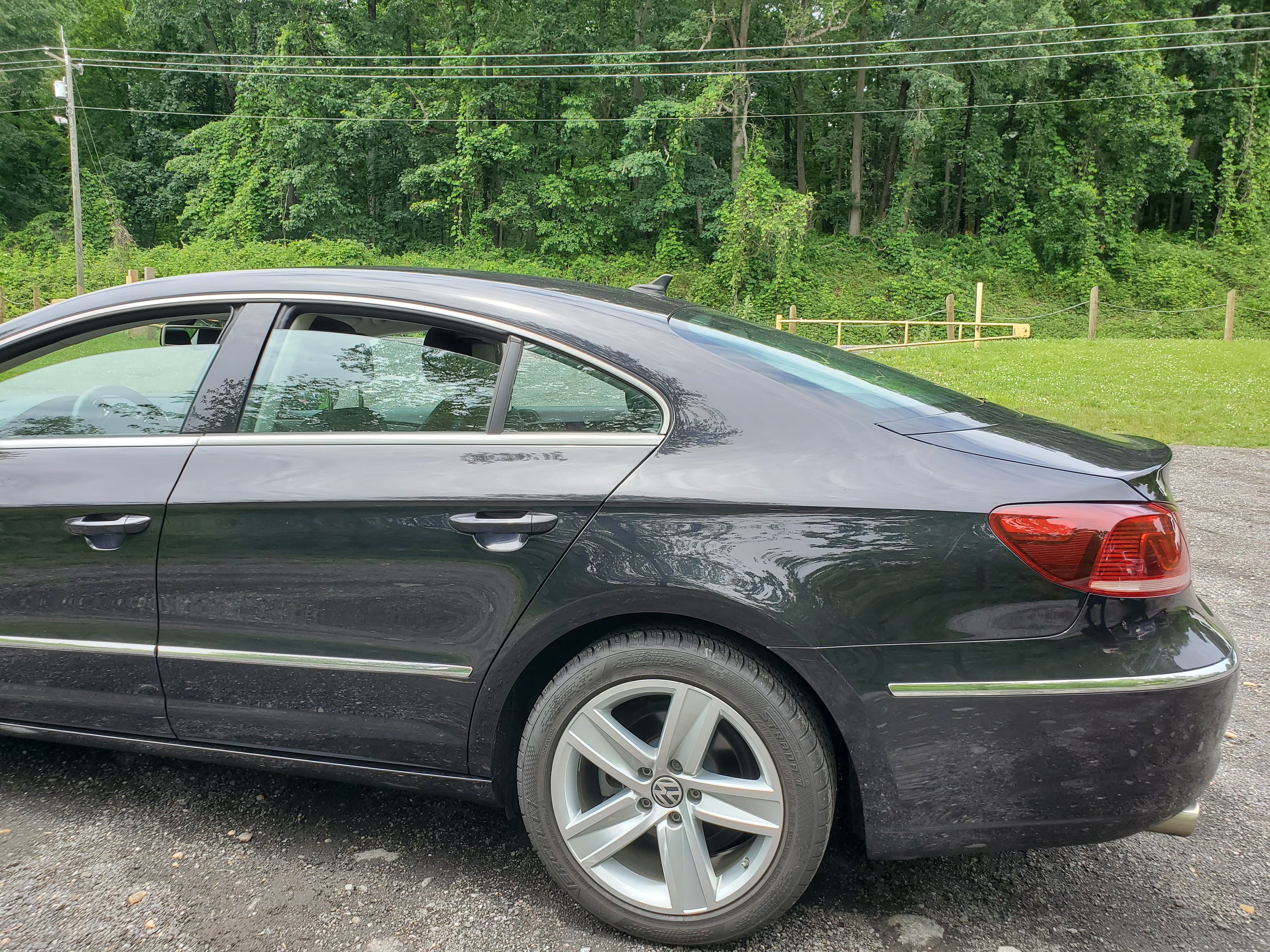
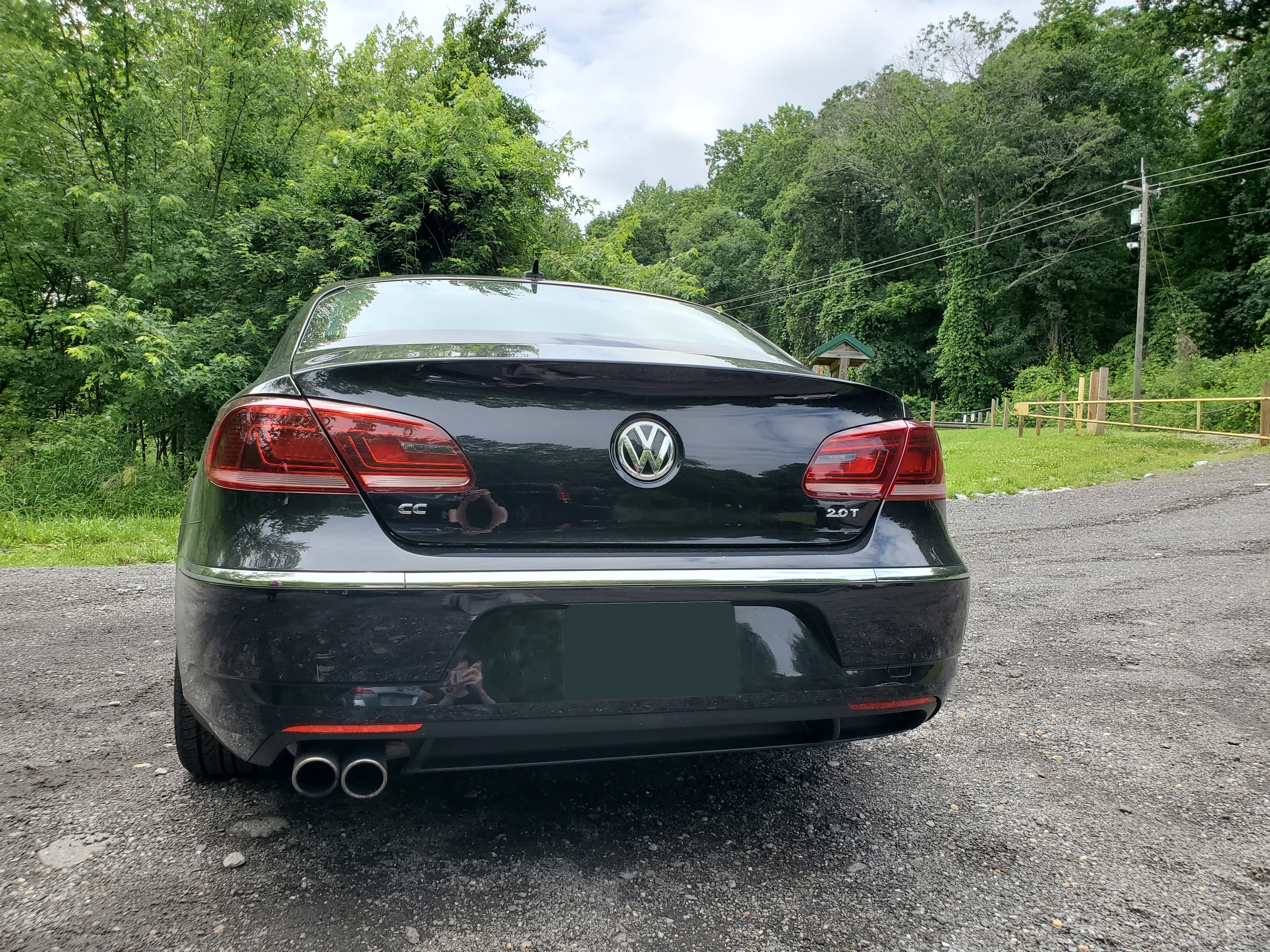
Inside, the "budget luxury" feel continues, though the CC betrays its Passat roots here. The center stack has a brushed-aluminum look, as does the dashboard, including the instrument cluster's bezel; this is a welcome departure from faux wood textures that luxury cars of the 1990s and 2000s seemed to adore so much. The dual-zone climate control is a nice luxury touch, as are the electric parking brake (don't ask me how many times I stomped empty air trying to apply it) and analog clock (though the standard Passat also has one.) However, the head unit feels like pretty standard Passat stuff, as do the steering wheel, shifter, instrument console, storage cubbies, and any number of other details inside. Fortunately, this isn't a bad thing; the CC's console has the same above-average materials, button feel, and user interface design as the Passat's. Perhaps the strongest aspect of the CC's interior are the seats; they are soft and supportive, with adjustable lumbar support, and are excellent for long highway drives. However, the bolstering feels too far apart, which somewhat discourages hard corners and enthusiastic driving, though they don't preclude it entirely. Though not perfect, they are certainly an excellent value add, not just for user perception, but for the user experience as well. Further improving this is a relatively quiet cabin, despite the frameless doors; wind noise is minimal at speed, and engine noise is generally muted, though the engine's growl is readily apparent when accelerating hard.
The front seat is quite spacious, with deep footwells and respectable headroom. However, the back seat is not so blessed, due to the CC's roofline. Though the rear seat is deep, with plentiful legroom, anybody taller than six feet will find themselves bumping their head nearly constantly, and the low roof makes entering and exiting the back seat a slightly complicated affair. Visibility is also somewhat compromised by the car's design, with thick pillars all around, and merges and tight turns draw some slight concern due to the driver's larger than normal blind spots. That said, if you expect to only carry children in the back seat, the CC is more than good enough. This is further improved by a capacious trunk, also made possible by the CC's low and long tail.
Overall, the CC's interior and exterior feel like the epitome of Volkswagen's modern brand: Not so sophisticated as to be considered fancy or wholly luxurious, but not so rental car-basic as to seem cheap. This lends itself to a a general user experience that VW may or may not have intended: The CC's appearance, the interior fittings, the seats, the cabin feel, all of them are Nice. Not quirky or charming, not quaint, not a luxury diamond in the rough, just Nice. It's comfortable, but not too comfortable. It's sophisticated, but not too sophisticated. It looks aggressive, but not too aggressive. While this is technically good, because it means that it offers the consumer value and prestige in a nonthreatening and approachable (and affordable) way, the its unobjectionable nature also makes it somewhat unremarkable, and being unremarkable isn't good, not for a car such as this. After all, isn't this the Passat's bigger, meaner sibling?
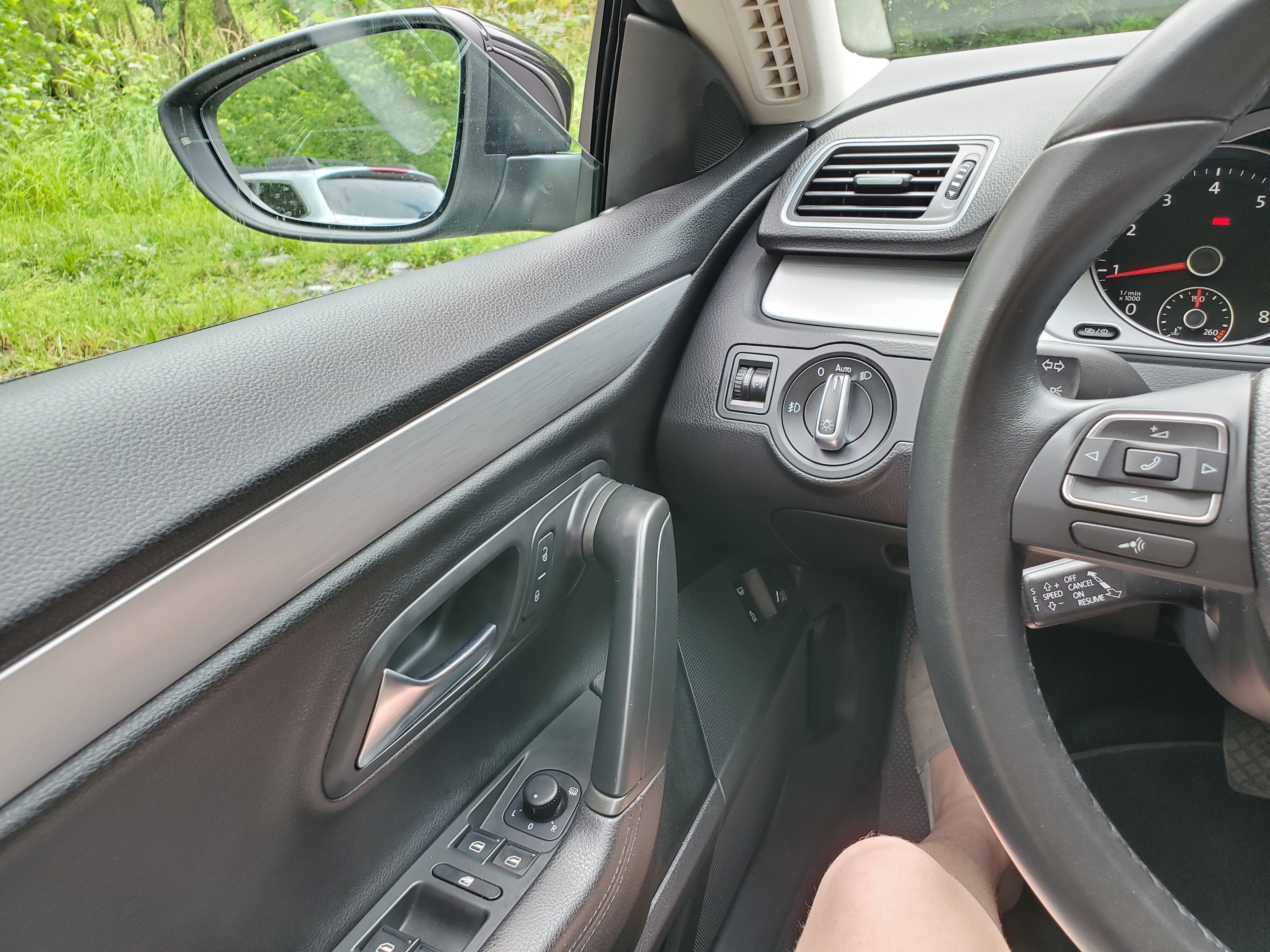
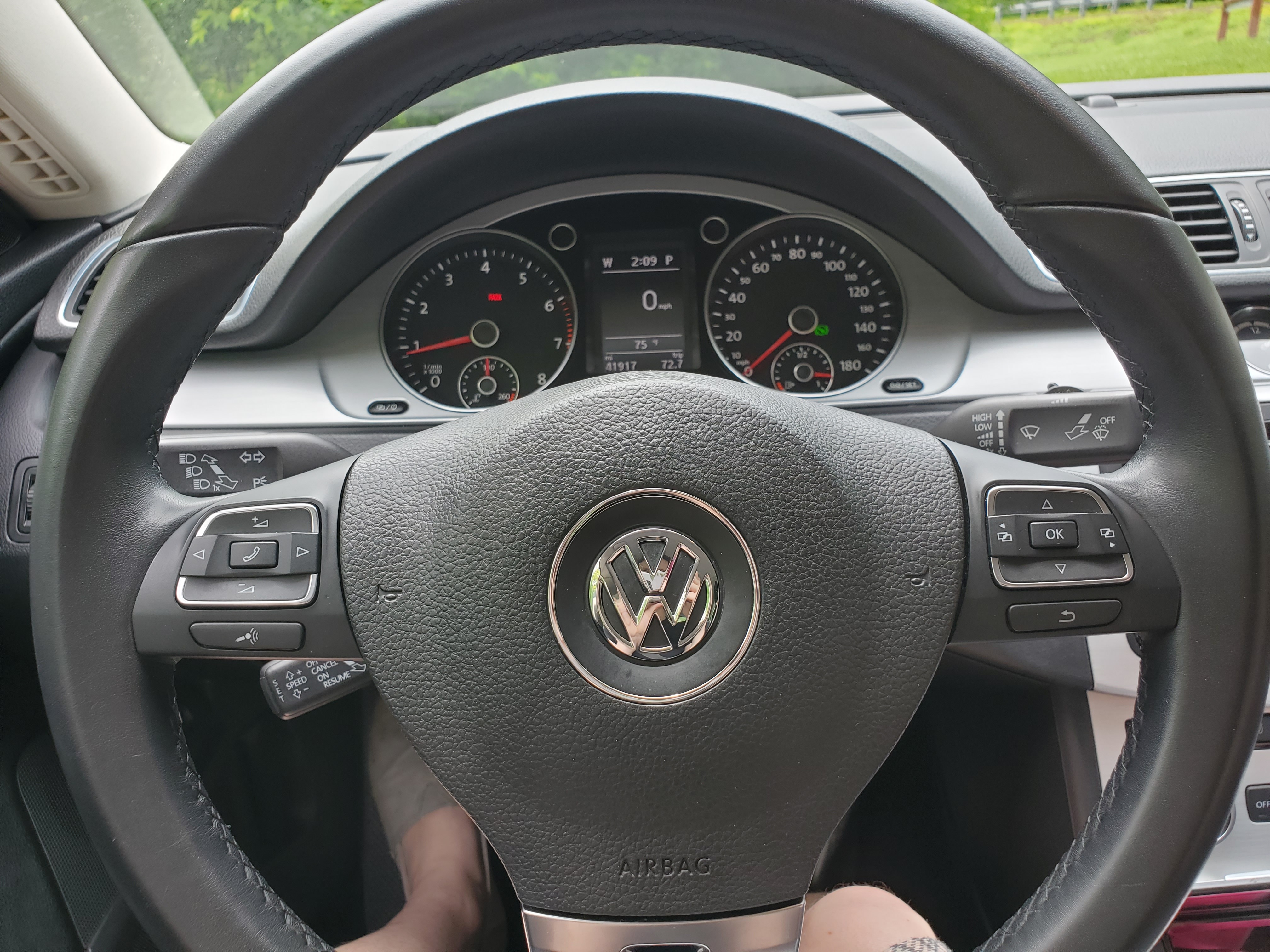
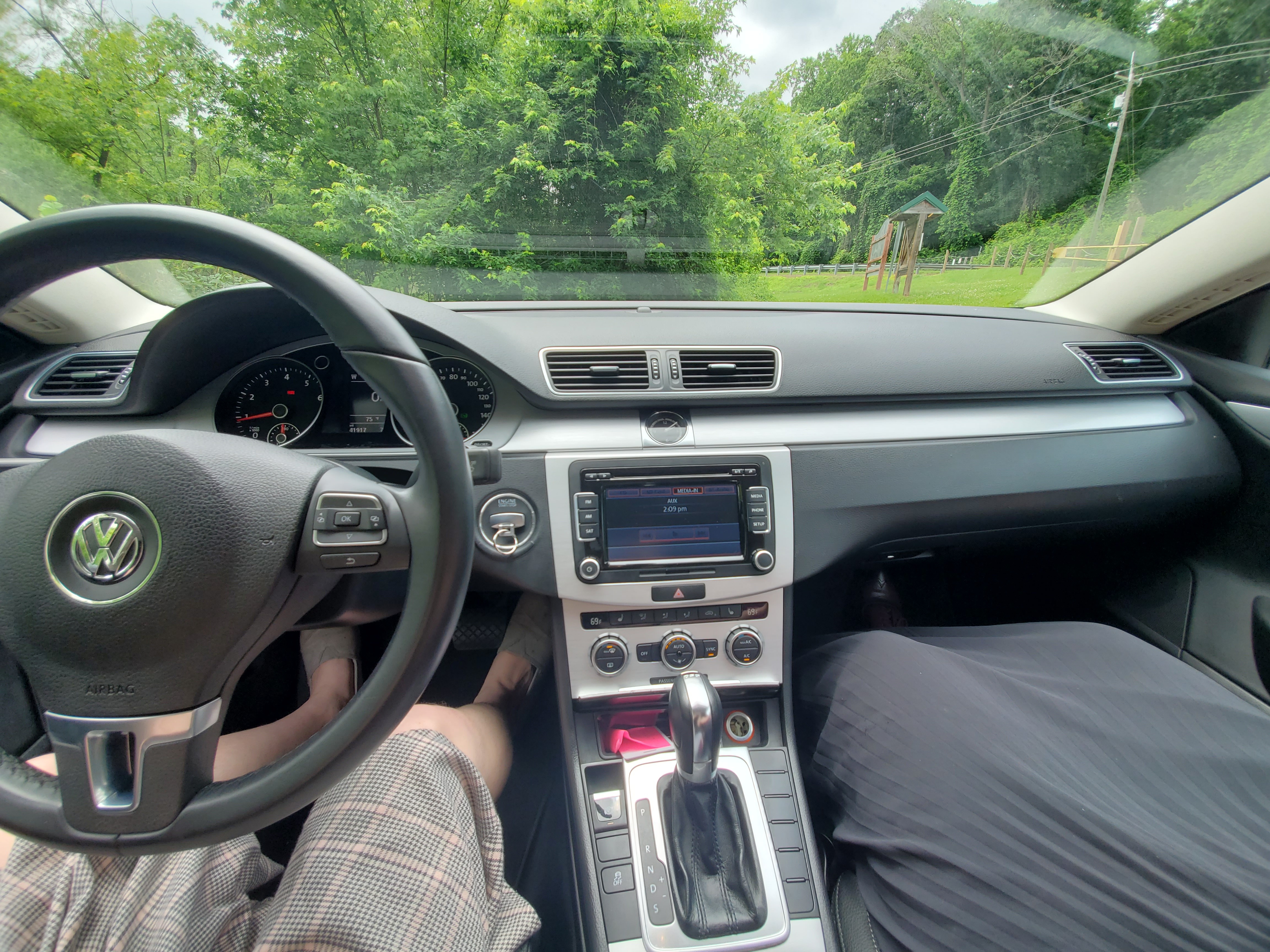
But none of these observations concern the CC's driving manners. After all, it could in reality be some rough, growling street weapon, a sports sedan of the highest, meanest order.
How does it drive?
To start the car, one uses an electronic key that mates with a socket in the dashboard, like an E90 3-series, but instead of pressing a separate start button, you just jam the key in until the engine starts, which took me the better part of a minute to figure out. Once the driver clears this hurdle, however, they are presented with a logical and well-designed user interface. The controls are essentially identical to those of the contemporary Passat, so there isn't anything particularly exotic for the driver to figure out, with the possible exception of an electric parking brake. Don't ask me how many times I stomped empty air with my left foot trying to set it.
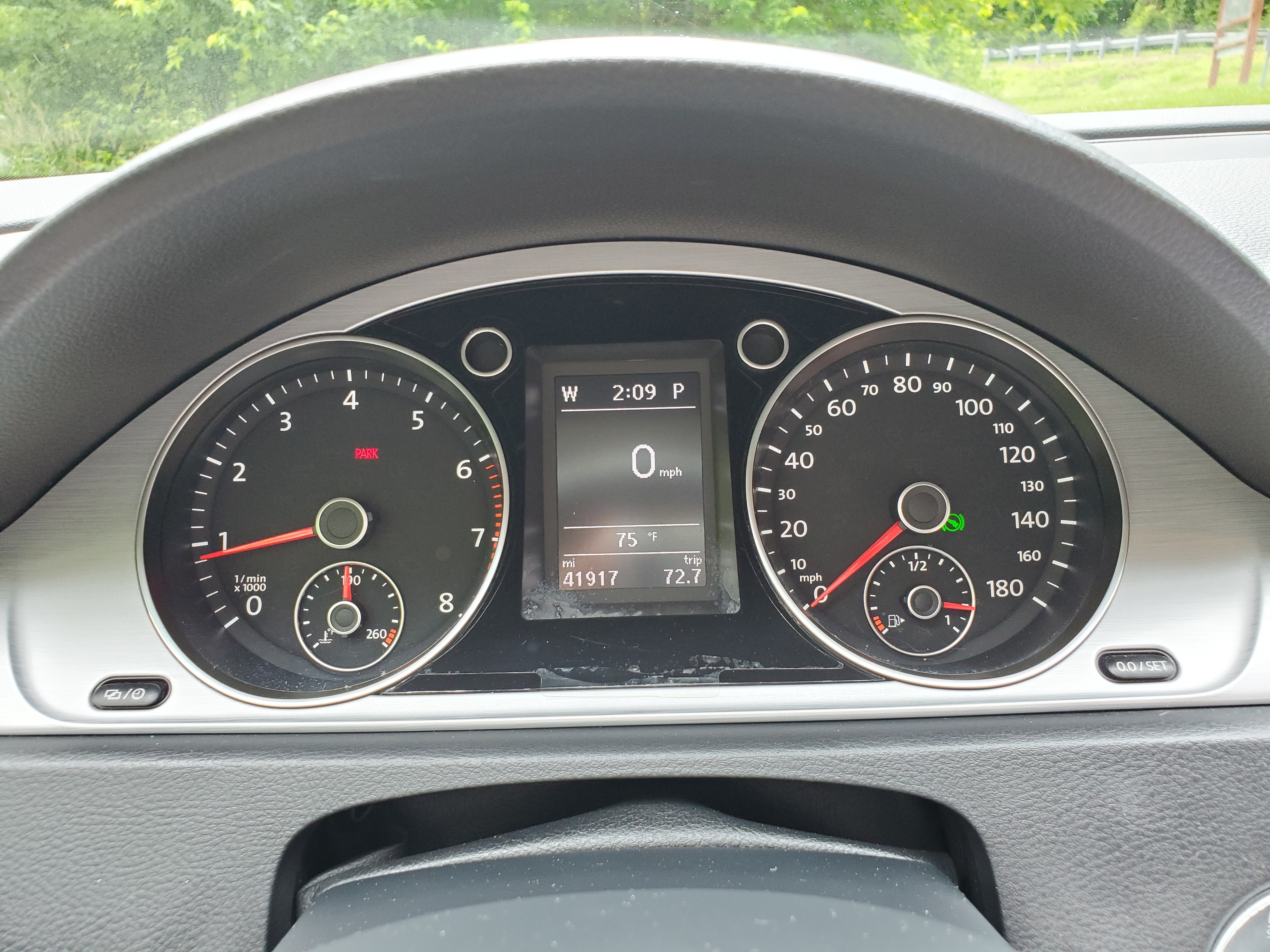
The car's heart and soul is of course the powertrain, and in the case of the Volkswagen CC, this takes the form of either Volkswagen's 2.0L turbo four, or 3.6L VR6. This sports(?) sedan comes with the four cylinder, which puts out a respectable 208 hp and 207 lb-ft. With the turbocharger's help, that grunt comes on early in the rev range, and makes passing and highway onramps worry-free. This power is also quite enough for spirited driving, and corners are easy to accelerate out of, aided by the snappy throttle response. The transmission is a six-speed dual-clutch unit, and exhibits not only that type's strengths, but also its weaknesses. Gear changes, both manually and automatically commanded, are handled very smoothly for both upshifts and downshifts, though shift speed feels largely commensurate with standard automatics. Unlike the standard Passat, which short-shifts to preserve fuel economy while driven casually, the CC's transmission does not do so, opting to generally shift a bit later for what might construed as a more sporty feel. The only major downside to this transition is the clutch policy when stopping and setting off; lacking a torque converter to continuously slip for parking, or hill starts, the computer instead must slip the transmission's clutches, which depending on the circumstances varies from feeling odd to legitimately difficult to control. This isn't a problem unique to the CC, though; I found that the contemporary GTI as well as the 2016 Audi A4 both exhibited similar, if not identical, behaviors. Despite its small weaknesses, though, the CC's powertrain is generally refined and pleasant, though the exhaust note sounds like it was determined by a boardroom committee. While it doesn't deliver hair-raising Sports Sedan performance, it succeeds at offering a more potent and sophisticated, yet still economical powertrain, compared to the standard Passat's 1.8T.
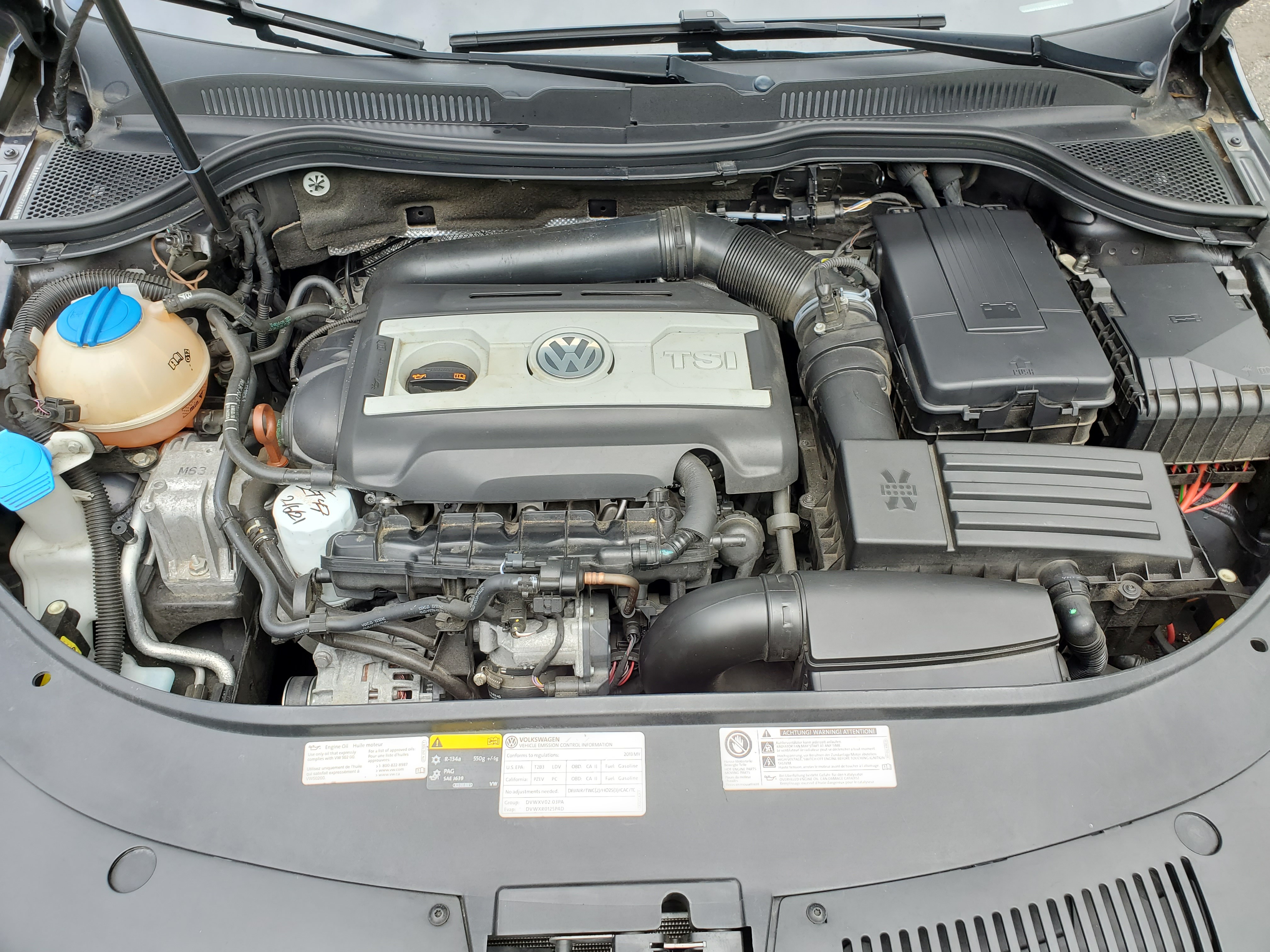

The powertrain's muscle is applied to the pavement by way of 235mm wide tires on 17 inch wheels, and the driver almost never wants for grip, save in the most aggressive maneuvers. Braking is commensurately effective, and the car doesn't feel too heavy or unstable when braking car, making dynamic driving less intimidating .The CC's steering is nicely weighted, neither too heavy nor too light. While steering is stiffer at speed, VW designed in much more assistance at low speeds, in contrast to the 2011 3 Series, wherein BMW opted for heavy, communicative steering at all speeds, resulting in a steering wheel that felt almost unassisted when parking. The CC is also designed to have much less feedback from the front wheels to the driver, resulting in a more isolated steering feel. For cruising, this helps create a more luxurious driver experience, where the driver is more insulated from the road surface. However, this also means that the CC starts to lose its edge in hard corners. The 245 mm tires have plenty of grip, and the front end turns in easily, but the steering feel and the car's heavy weight mean that the vehicle ends up feeling reluctant to continue through corners. For normal driving or cruising, though, this is less of a problem; on your average twisty country road, the CC will acquit itself well, only complaining when the driver becomes more demanding. The suspension itself prevents major body roll in corners, but Volkswagen clearly tried to find a happy medium between comfortable and sporty suspension dynamics; The springs are softer, and the car's weight helps mellow out bumps, but the dampers themselves are rather stiff. The suspension is certainly okay at both of these things, but it's clearly a compromise. perhaps with adjustable rate dampers, VW could have achieved their vision, but that would have required more complicated engineering and a higher price tag, and their decision to opt for a simpler design and more commonality with the Passat becomes apparent with every turn, bump, and pothole.
In contrast to the last sporty sedan I reviewed, the BMW 328i, the VW CC doesn't feel like a precise instrument, a fine scalpel for carving the road. Rather, it feels looser, softer, more forgiving. This isn't to say that the CC is some floaty barge, as it still exhibits far sharper handling and road manners than the average midsize or fullsize sedan, but the CC seems as though it cannot afford to commit fully to being a Sports Car. In highway driving or cruising, the soft springs and firmer dampers provide a more connected road feel that manages to not be punishing, and the powertrain executes passes and merges excellently. However, when the driver begins to demand more of the CC, pushing it harder into corners, tossing it through twists and turns, it begins to feel out of its element; it becomes clear that this is, for all its virtues, still a heavy front wheel drive car that cannot afford to ever be seen as uncomfortable.
So perhaps that's just the thing; the CC cannot be seen as uncomfortable. It cannot be seen as a car that compromises, not in the way most drivers care about. Yes, the CC does things by half measures. It's fast, but not that fast. It's agile, but not terribly enthusiastic about tight turns, fast corners, and careful driver inputs. It hugs the road, but not too hard, lest it be mistaken for some boy-racer Civic Si. It shifts fast and smoothly, but not so fast it comes across as some high-strung BMW or Audi. If you look at the CC as a Sports Sedan, these are all drawbacks, but they don't necessarily have to be! Consider the CC instead as what it was based on, the Passat. It is a large midsize sedan, with more power, better road manners, and a more refined interior than the average family car. The CC is full of value adds for the buyer who likes driving, but not that much. The CC feels as though it was designed to deflect the kind of questions one's friends might ask upon finding out you bought a low-slung, fast sedan. "Isn't that uncomfortable, though?" "Don't you get bad gas mileage?" "Are you sure you can fit everyone?" No, it's quite comfortable, leather seats and all. No, it's quite efficient, though it drinks 91 octane. Yes, there's quite enough space, just bend your head when you get in. You get a lot of the perceived benefits of sporty cars, without any of the perceived drawbacks. That doesn't sound like a half bad deal.
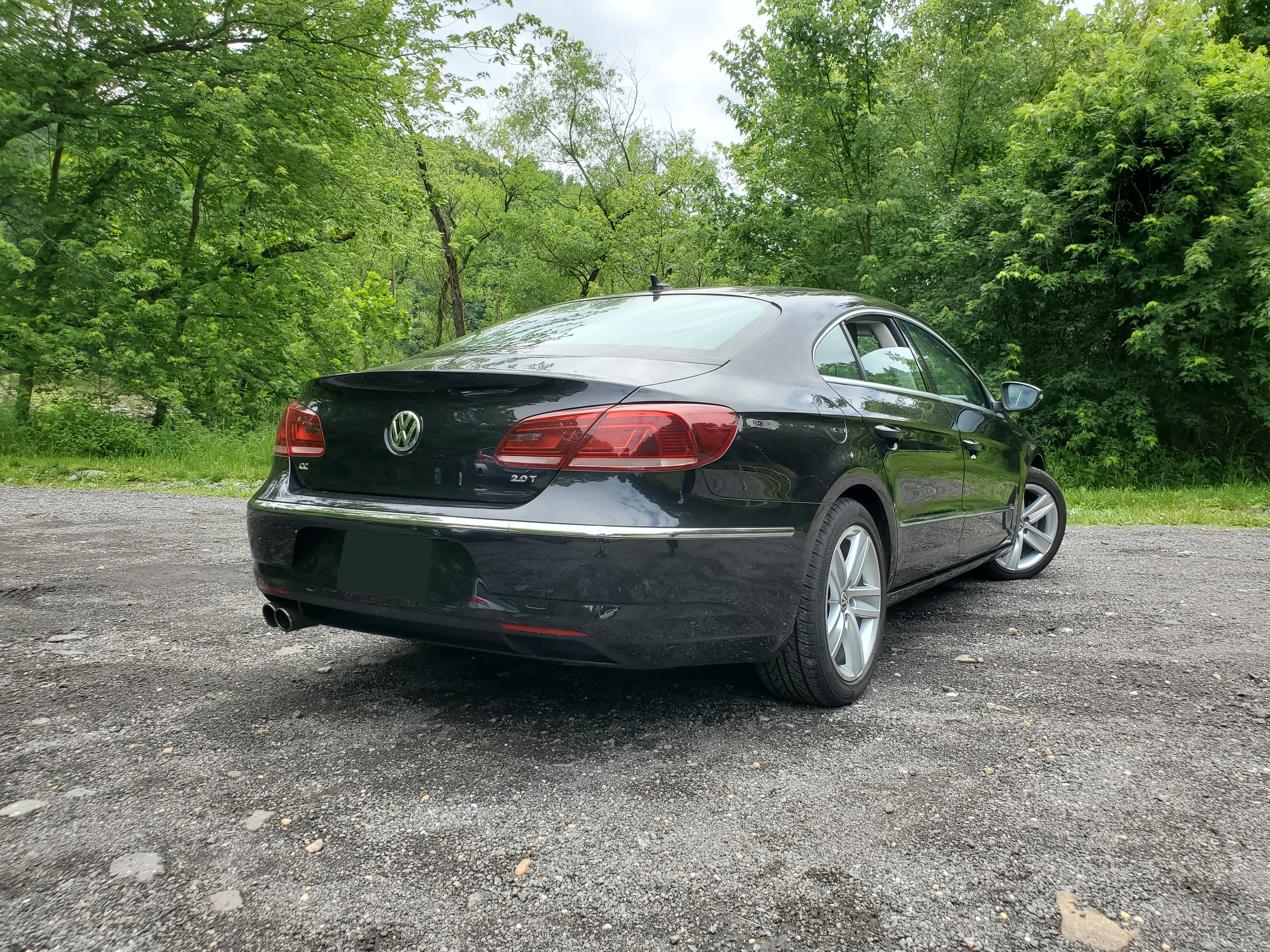
The European Chrysler Cordoba
The CC's mix of features and attributes may seem confused, at first. Performance design by half measures, yet also cost-compromised luxury. What gives? Why build a car like that? The answer is quite simple: It's a large, spacious, comfortable budget-executive car with lots of style and a tasteful amount of speed. A grand tourer for the cost-conscious, a muscle car for the self-conscious: It's a personal luxury car! The common wisdom is that the personal luxury car died around the turn of the century, killed by rising gas prices and new, increasingly popular SUVs, but perhaps they survived in another form, gaining a couple doors in order to survive in a more utility-conscious world. Just like the Cordoba, or Monte Carlo, or Riviera, the CC is based on a common family car architecture, yet boasts style, comfort, and performance as befits a real luxury car, but at a substantially more affordable price point. Consider even the late '60s Thunderbird, which was offered in a coupe-like four door version, perhaps a prescient vision of the modern "coupe-sedan"!
This view of sporty midsize family sedans as a new breed of personal luxury cars actually serves to explain quite a few cars now sold; consider, for example, the current Nissan Maxima. It's designed to be powerful and sporty, yet comfortable and practical, both a family car and light performance car. Consider the six-cylinder Charger and Challenger, or the high-trim Accords and Camries (Camrys?). These cars offer a luxury experience, or some approximation thereof, at a far more accessible price point. In fact, the new entry models from BMW and Mercedes, the 2-series "gran coupe" sedan and the A-class sedan, may well be aimed at this segment, though with some caveats. Perhaps we will see a renaissance of sedans, or at least a reframing of their market niches, as they begin to converge at the meeting point of performance, affordability, and luxury, a juncture that taller, heavier, more expensive crossovers may or may not be able to achieve.
The fact of the matter is that the Volkswagen CC compromises on everything. It does everything by half-measures, but it pulls it off, and manages to construct a budget-executive driver experience that connotes a far more expensive, more sophisticated car than it really is. That's nothing to sneer at! This is a car for the person who wants to have their cake and eat it, yet can't afford a car that makes no compromises. You get Civic Si speed without the high-strung engine and hard suspension. You get Audi luxury (mostly) without the price tag (mostly). You get SUV road trip-ability, at least for two, and highway manners that let you eat up the miles with ease, like a far more expensive GT coupe might. The personal luxury car lives on, if you know where to look.
I rented this car with Turo, a crowdsourced car rental platform.